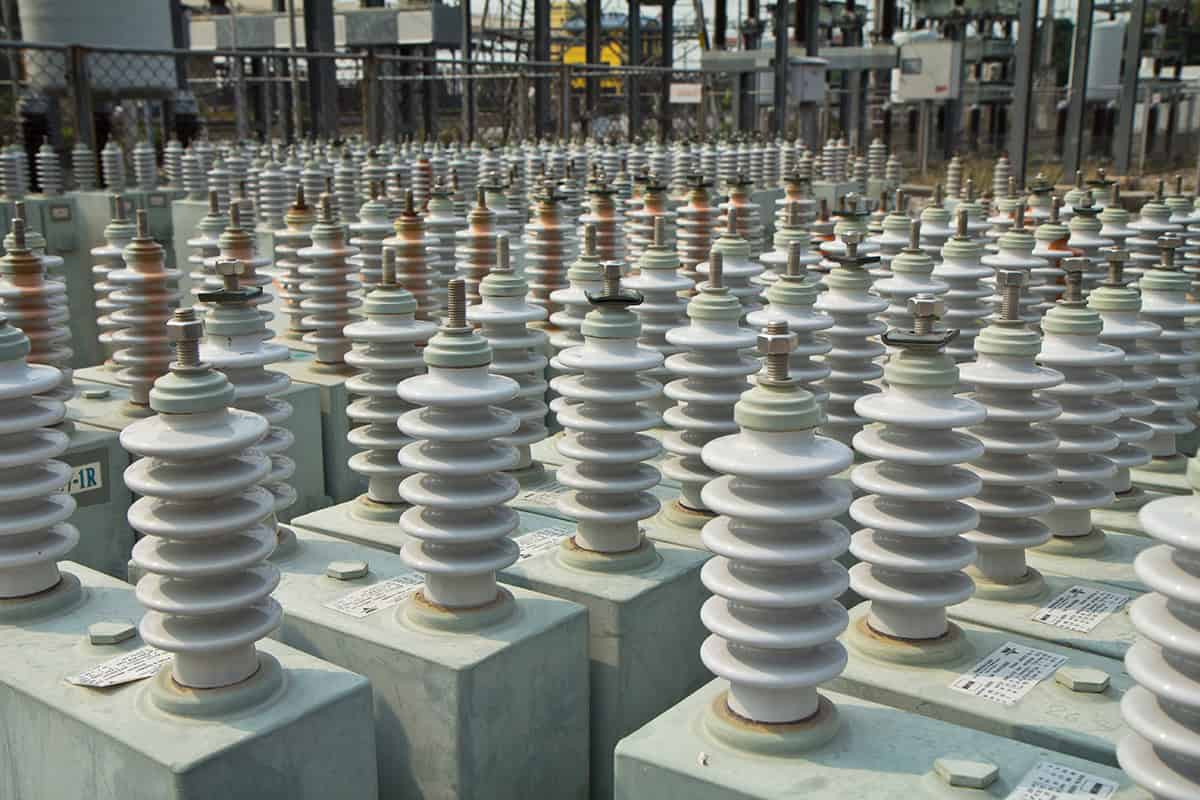US company Peak Nano has engineered thin films of layered polymers to enhance the performance and extend the lifetime of high-voltage capacitors for critical electrical infrastructure

Grid operators around the world are under intense pressure to expand and modernize their power networks. The International Energy Authority predicts that demand for electricity will rise by 30% in this decade alone, fuelled by global economic growth and the ongoing drive towards net zero. At the same time, electrical transmission systems must be adapted to handle the intermittent nature of renewable energy sources, as well as the extreme and unpredictable weather conditions that are being triggered by climate change.
High-voltage capacitors play a crucial role in these power networks, balancing the electrical load and managing the flow of current around the grid. For more than 40 years, the standard dielectric for storing energy in these capacitors has been a thin film of a polymer material called biaxially oriented polypropylene (BOPP). However, as network operators upgrade their analogue-based infrastructure with digital technologies such as solid-state transformers and high-frequency switches, BOPP struggles to provide the thermal resilience and reliability that are needed to ensure the stability, scalability and security of the grid.
“We’re trying to bring innovation to an area that hasn’t seen it for a very long time,” says Dr Mike Ponting, Chief Scientific Officer of Peak Nano, a US firm specializing in advanced polymer materials. “Grid operators have been using polypropylene materials for a generation, with no improvement in capability or performance. It’s time to realize we can do better.”
Peak Nano has created a new capacitor film technology that address the needs of the digital power grid, as well as other demanding energy storage applications such as managing the power supply to data centres, charging solutions for electric cars, and next-generation fusion energy technology. The company’s Peak NanoPlex™ materials are fabricated from multiple thin layers of different polymer materials, and can be engineered to deliver enhanced performance for both electrical and optical applications. The capacitor films typically contain polymer layers anywhere between 32 and 156 nm thick, while the optical materials are fabricated with as many as 4000 layers in films thinner than 300 µm.
“When they are combined together in an ordered, layered structure, the long polymer molecules behave and interact with each other in different ways,” explains Ponting. “By putting the right materials together, and controlling the precise arrangement of the molecules within the layers, we can engineer the film properties to achieve the performance characteristics needed for each application.”
In the case of capacitor films, this process enhances BOPP’s properties by interleaving it with another polymer. Such layered films can be optimized to store four times the energy as conventional BOPP while achieving extremely fast charge/discharge rates. Alternatively, they can be engineered to deliver longer lifetimes at operating temperatures some 50–60°C higher than existing materials. Such improved thermal resilience is useful for applications that experience more heat, such as mining and aerospace, and is also becoming an important priority for grid operators as they introduce new transmission technologies that generate more heat.

“We talked to the users of the components to find out what they needed, and then adjusted our formulations to meet those needs,” says Ponting. “Some people wanted smaller capacitors that store a lot of energy and can be cycled really fast, while others wanted an upgraded version of BOPP that is more reliable at higher temperatures.”
The multilayered materials now being produced by Peak Nano emerged from research Ponting was involved in while he was a graduate student at Case Western Reserve University in the 2000s, where Ponting was a graduate student. Plastics containing just a few layers had originally been developed for everyday applications like gift wrap and food packaging, but scientists were starting to explore the novel optical and electronic properties that emerge when the thickness of the polymer layers is reduced to the nanoscale regime.
Small samples of these polymer nanocomposites produced in the lab demonstrated their superior performance, and Peak Nano was formed in 2016 to commercialize the technology and scale up the fabrication process. “There was a lot of iteration and improvement to produce large quantities of the material while still maintaining the precision and repeatability of the nanostructured layers,” says Ponting, who has been developing these multilayered polymer materials and the required processing technology for more than 20 years. “The film properties we want to achieve require the polymer molecules to be well ordered, and it took us a long time to get it right.”
As part of this development process, Peak Nano worked with capacitor manufacturers to create a plug-and-play replacement technology for BOPP that can be used on the same manufacturing systems and capacitor designs as BOPP today. By integrating its specialist layering technology into these existing systems, Peak Nano has been able to leverage established supply chains for materials and equipment rather than needing to develop a bespoke manufacturing process. “That has helped to keep costs down, which means that our layered material is only slightly more expensive than BOPP,” says Ponting.
Ponting also points out that long term, NanoPlex is a more cost-effective option. With improved reliability and resilience, NanoPlex can double or even quadruple the lifetime of a component. “The capacitors don’t need to be replaced as often, which reduces the need for downtime and offsets the slightly higher cost,” he says.
For component manufacturers, meanwhile, the multilayered films can be used in exactly the same way as conventional materials. “Our material can be wound into capacitors using the same process as for polypropylene,” says Ponting. “Our customers don’t need to change their process; they just need to design for higher performance.”
Initial interest in the improved capabilities of NanoPlex came from the defence sector, with Peak Nano benefiting from investment and collaborative research with the US Defense Advanced Research Projects Agency (DARPA) and the Naval Research Laboratory. Optical films produced by the company have been used to fabricate lenses with a graduated refractive index, reducing the size and weight of head-mounted visual equipment while also sharpening the view. Dielectric films with a high breakdown voltage are also a common requirement within the defence community.




